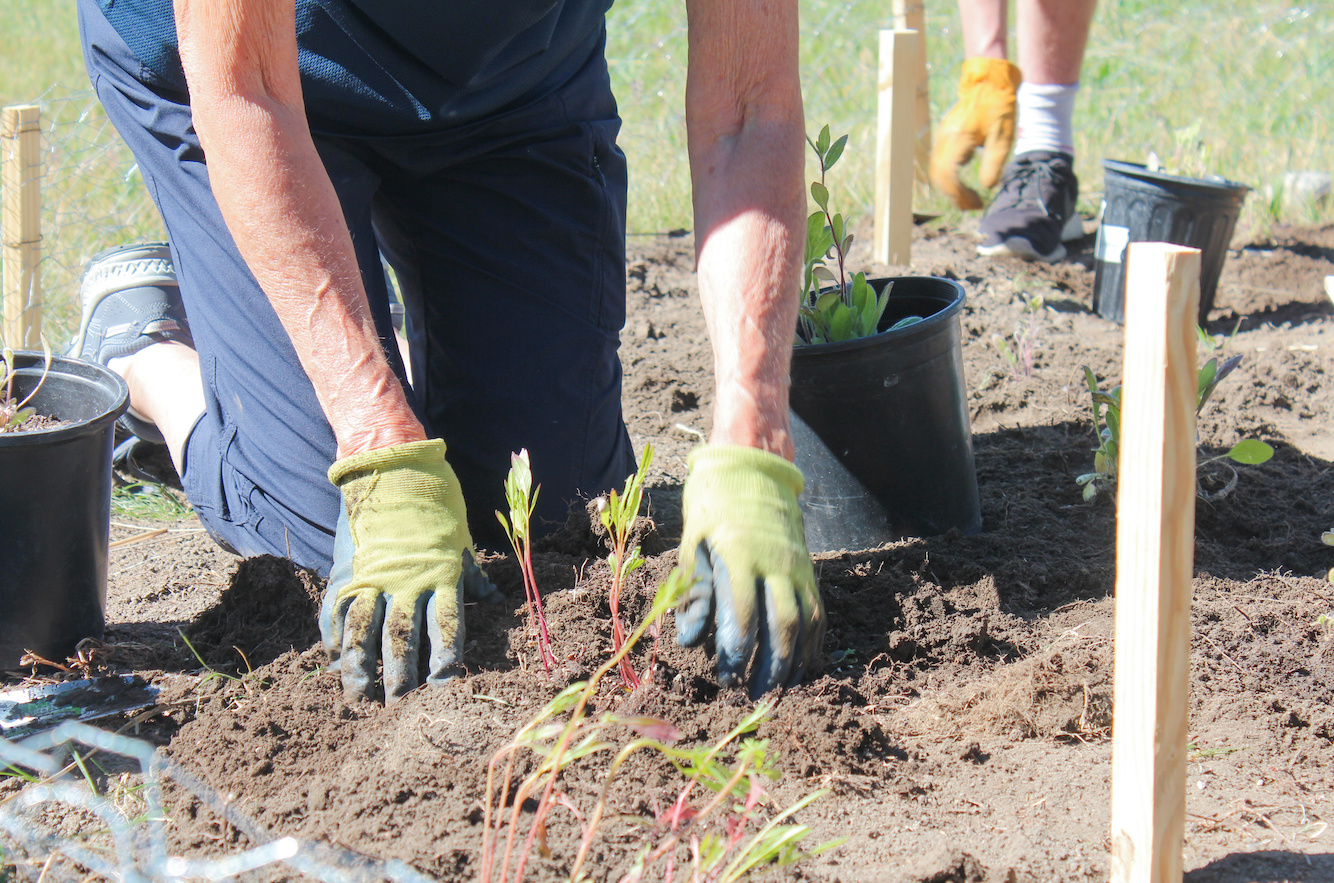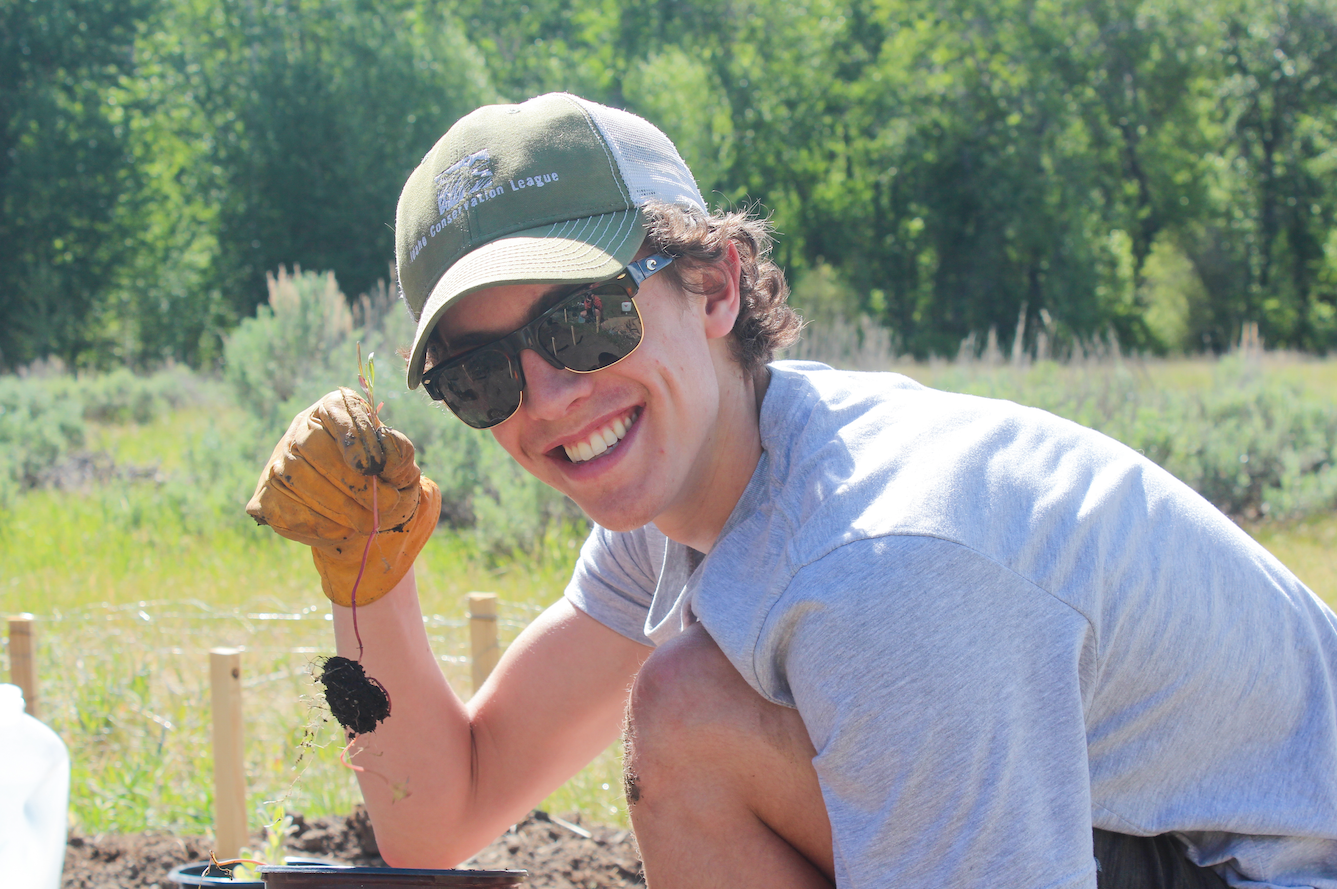Restoring Pollinator Habitat for Biodiversity
Across the world, pollinator species are experiencing an unprecedented decline. Pollinators, such as bees, butterflies, moths, flies, hummingbirds and others, are essential to our environment by helping in the reproduction of 85% of the world’s flowering plants. Both the native flowering plants of our wild landscapes as well as many of the crops on our farmlands need the ecosystem service that pollinators provide to reproduce normally. Furthermore, all the organisms, including humans and wildlife, that feed on fruits, seeds, and other products derived from animal pollination, depend on the work of pollinators to survive.
But, what is a pollinator? A pollinator is an animal that transports pollen from the male organ of a flower (the anther) to the female organ of a flower (the stigma). This helps with the fertilization and ultimately the reproduction of the plant by bringing the male gametes in the pollen closer to the ovules in the stigma. Pollinator species allow for plant species to propagate, disperse, and maintain genetic diversity. Although many animals such as hummingbirds, bats and rodents are considered pollinators, insects are the group that do the bulk of the pollination work. Some of these insects may be familiar, such as bees, butterflies and moths, but there are also other groups like certain families of flies, beetles and wasps that are very important pollinators.In Idaho, a state with 400 pollinator species and 11.8 million acres of farmland that requires pollinators for production, it is crucial to prevent further decline within these populations.The United States Department of Agriculture (USDA) explains that across the agricultural sector, there are over 150 food crops that must be pollinated by animals, including butterflies, bees, and bats. Due to their significant role in the reproductive cycle of plants, pollinators support this $10 billion/year industry. They are also fundamental for the success of our native flowering plants in our beautiful wild landscapes. Even more importantly, the USDA states that, “Without pollinators, the human race and all of earth’s terrestrial ecosystems would not survive.”
Why are pollinators declining?
Many factors are contributing to the decline of native pollinators, including the degradation and fragmentation of habitat, the decline of native plant communities, pesticide use, the spread of pathogens and climate change. Habitat loss, caused by the conversion of natural habitat into agricultural land or urban development, is one of the main factors contributing to the decline of pollinator species. This degradation and fragmentation negatively affects nesting habitat, food sources and host plants used by pollinators.This is the reason why restoring and connecting fragmented and degraded landscapes by reintroducing flower-rich native plant communities is key to support a healthy pollinator population.The Wood River Land Trust started the Pollinator Initiative to identify and pursue opportunities to enhance pollinator habitat as well as provide education and events for the community to engage with this topic.
Pollinator Meadow
The Wood River Land Trust identified a floodplain meadow at the Colorado Gulch Preserve as a potential restoration site for increasing biodiversity and pollinator habitat. In this 12 acre site, the Pollinator Meadow Project was started. The goal of the Pollinator Meadow Project is to create a flower-rich plant community with plenty of food sources and habitat for pollinators at Colorado Gulch Preserve. To accomplish this, the main focus is to create pollinator islands, these are circular plots where the prior vegetation is removed and pollinator friendly species are planted. The idea of the pollinator islands is to create small patches with high density of flowering plants, which will attract pollinators by providing different food sources throughout the year. In addition, it will provide seeds that will disperse throughout the meadow helping with the expansion of this pollinator friendly plant community. Another key element of the project is to enhance pollinator habitat by creating habitat additions on the site. Different kinds of pollinators need different types of habitats that will offer shelter, places to nest, lay eggs and over winter. Pollinator habitat additions consisted of creating bare ground areas, cavity sites on logs, and brush pile habitat which are necessary as nesting habitat for different species of bees.
This work was done through the Wood River Land Trust Pollinator Initiative. Support was provided by Americorps, community volunteers, the Student Conservation Council, the Sage School, Webb Landscaping, Whitehead landscaping, Thorn Creek Native Seed Farm, and The Hunger Coalition. This project was funded by the taxpayers of Blaine County through the Land, Water and Wildlife Program, The Youth Generosity Project, The Horizon Foundation, Pam Feld, The Helios Foundation, Paul and Barbara Dali, and additional donors from the community.
Restoration Methods Used
Pollinator Habitat Additions
Many native bee species need bare ground or cavities for nesting. Areas of bare ground were created by removing previous vegetation and turning the soil to lose it. Cavities in logs were created by drilling holes into dead aspen logs that were brought from the nearby forest. These pre-constructed cavities offer nesting and shelter sites for many native solitary bees. In addition, brush pile habitat was created by piling branches, brought from the nearby aspen forest, on top of bare ground. Brush pile habitat is especially important for bumble bee species to tunnel into the soil and be protected by the brush pile.
Pollinator Island Construction
To create these islands of flowers, first it is necessary to remove the pre existing vegetation. We selected areas with invasive weeds or grasses to be removed. The removal can be made with different methodologies: organic or non organic herbicide and hand tilling are the treatments we chose, but solarization, smothering and other treatments can be used as well.After removing the vegetation, we transplanted pollinator friendly seedlings and hand seeded the site. A diversity of plant species with different blooming times, and both annuals and perennials were selected to provide food sources for pollinators throughout the season.Burlap sacking, cardboard or other sheet coverings can be placed in between plants to avoid new growth of weeds and to keep the moisture of the soil. The burlap sacking is removed before the plants drop their seeds so they can contribute to the seedbed for next season.
Removing Invasive Plant Species
Invasive species usually compete with native species and, with the right conditions, they can take over a site, reducing the biodiversity of the plant community. Many native pollinator species are specialist, relying on one or a few species of native plants for food or habitat. If invasive species are not controlled, they can outcompete the native plants that are essential for many pollinators to survive. Different invasive plant species have been routinely controlled by staff or in volunteer events to keep their populations under control.

Shrub Planting
Shrubs were planted throughout the meadow. Many of the selected shrub species are early bloomers, providing food and resources for pollinators in early spring. Shrubs also help with the stabilization of the soil and, if planted in riparian areas, the stabilization of the banks of the riparian zone which helps to the overall restoration of the site.
Resources
https://www.xerces.org/pollinator-resource-center (Region-specific resources to aid in the planning, establishment, restoration, and maintenance of pollinator habitat)
https://www.pollinatorsnativeplants.com/ (Bee and pollinator books by Heather Holm)
https://www.nrcs.usda.gov/wps/portal/nrcs/main/plantmaterials/pmc/west/idpmc/ (Aberdeen Plant Materials Center, plant solutions for the landscapes of the intermountain west, including plant solutions for at-risk wildlife and pollinators)
Information about plants: https://www.wildflower.org/plants/https://plants.sc.egov.usda.gov/java/





